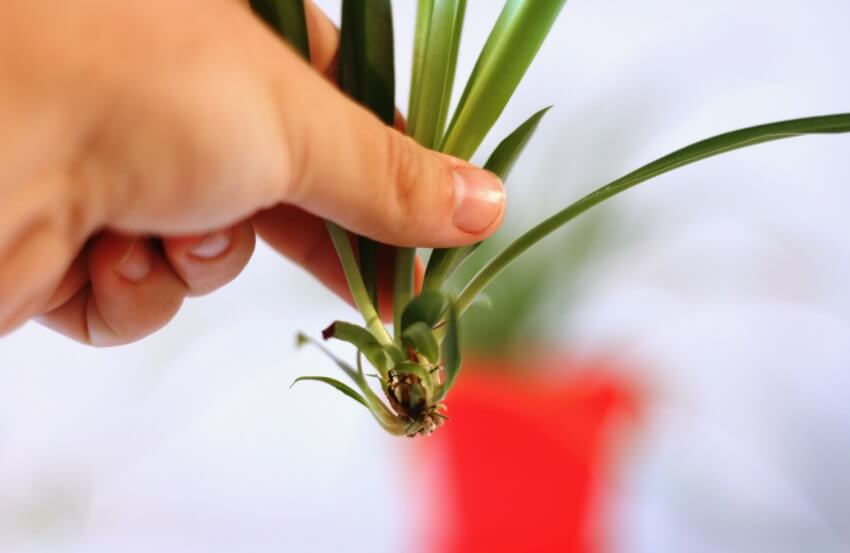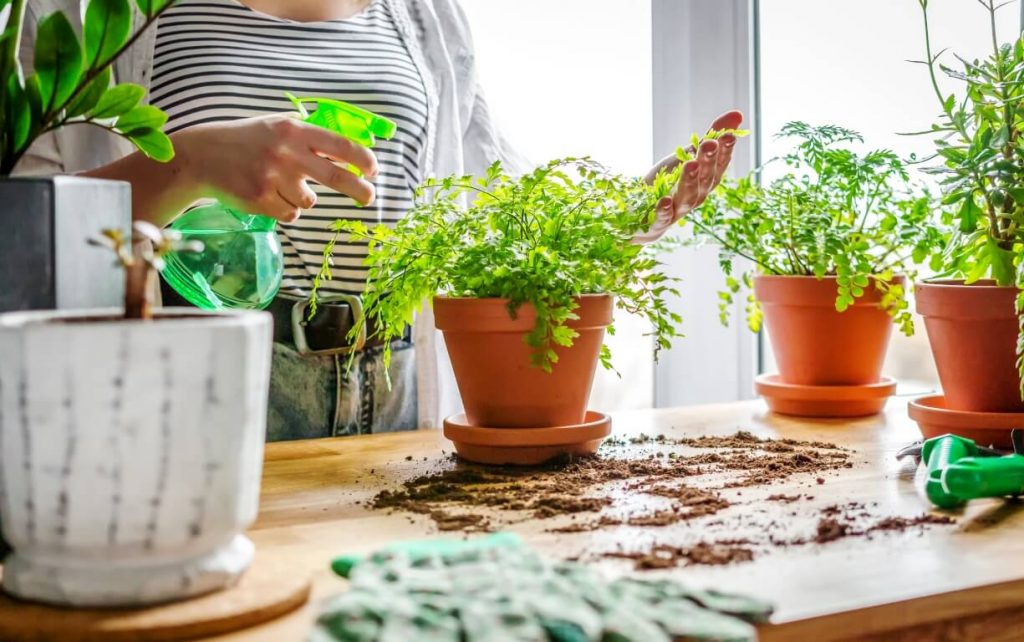Nothing is more gratifying for indoor gardeners than seeing their beloved houseplants multiply in front of their eyes. Plant propagation is one of the simplest ways to have more fresh plants in your home. You can multiply plants you currently own or plants belonging to your friends.
The good news is that several houseplants are simple to propagate. This article will review some of the easiest plants to propagate indoors.
If you are interested in this topic, you can also read
<<How To Propagate Peace Lily>> and <<How To Propagate Elephant Ear Plant>>>articles.
Propagation methods
There are numerous methods for propagating plants. Fortunately, most common houseplants can be multiplied using one of these four methods:
- Stem-cutting
- Leaf-cutting
- Root division
- Pups or plantlets
Easiest plants to propagate by stem cuttings
The most frequent way for multiplying many woody ornamental plants is stem cuttings. Since the new plant will have an exact genetic match to the parent plant, stem-cutting propagation is a sort of cloning [1].
The other common method of plant propagation, seed collection, germination, and planting, is not always successful. Stem cutting is the most reliable method for propagating hybrid plants since many hybrid plants do not “grow true” to their parent plants when they generate seeds.
The following plants are some of the easiest plants to propagate by stem cuttings:
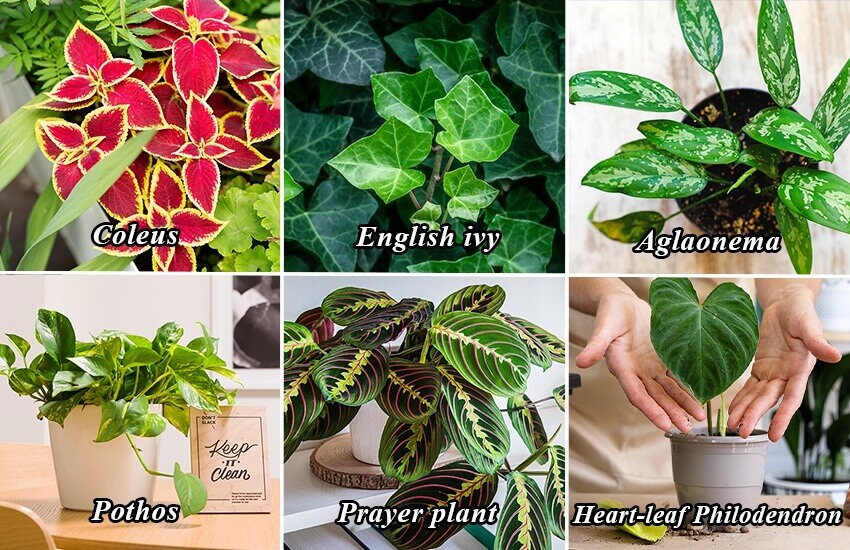
- Pothos (Epipremnum aureum)
- Wandering jew (Tradescantia zebrina)
- Syngonium (Arrowhead)
- Heart-leaf Philodendron (Philodendron hederaceum)
- Prayer plant (Maranta leuconeura)
- Aglaonema (Chinsese evergreen)
- English ivy (Hedera helix)
- Swiss Cheese Plant (Monstera deliciosa)
- Schefflera (Umbrella plant)
- Coleus
- String of pearls
- Lipstick Plant
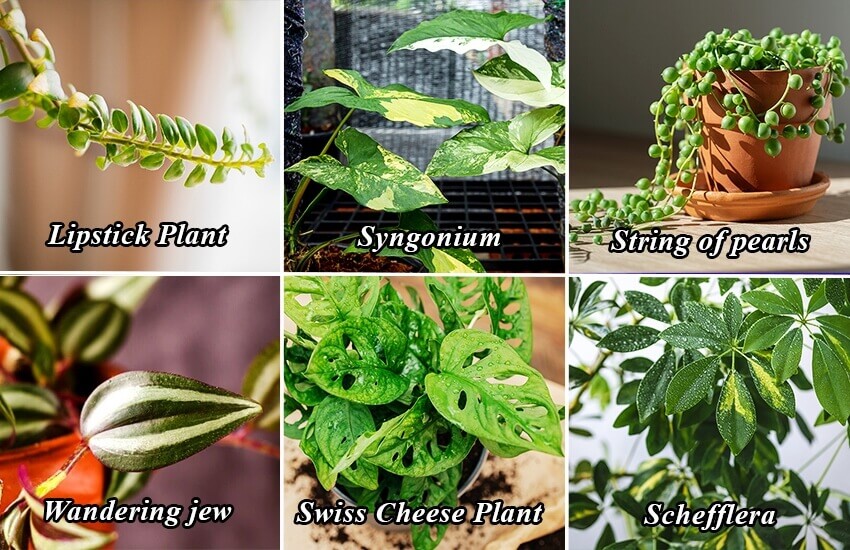
Easiest plants to propagate by leaf cuttings
A few plants can be multiplied from a single leaf or a portion of a leaf. Most plants’ leaf cuttings do not grow into new plants; instead, they usually merely develop a few roots or decompose. Leaf cuttings can only be utilized for plants that are able to develop adventitious buds since they lack an axillary bud. Certain indoor plants are propagated nearly solely by leaf cuttings [2].
The following plants are some of the easiest plants to propagate by leaf cuttings:
- African violets
- ZZ plant (Zamioculcas Zamiifolia)
- Begonia
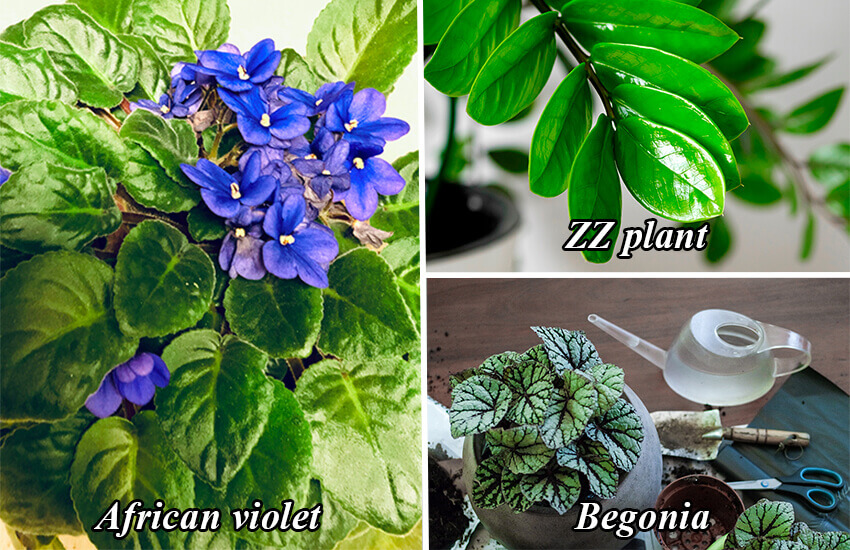
Easiest plants to propagate by root division
One of the simplest methods of plant propagation is division. In this method, a section of the plant’s root system is dug up, severed, and then the plant is replanted. One plant may be divided into one to twenty divisions, depending on the species and age of the plant [3].
The following plants are some of the easiest plants to propagate by root division:
- Aloe vera
- ZZ plant (Zamioculcas Zamiifolia)
- Snake plant (Sansevieria)
- Peace lily (Spathiphyllum)
- Boston fern (Nephrolepis exaltata)
- Calatheas
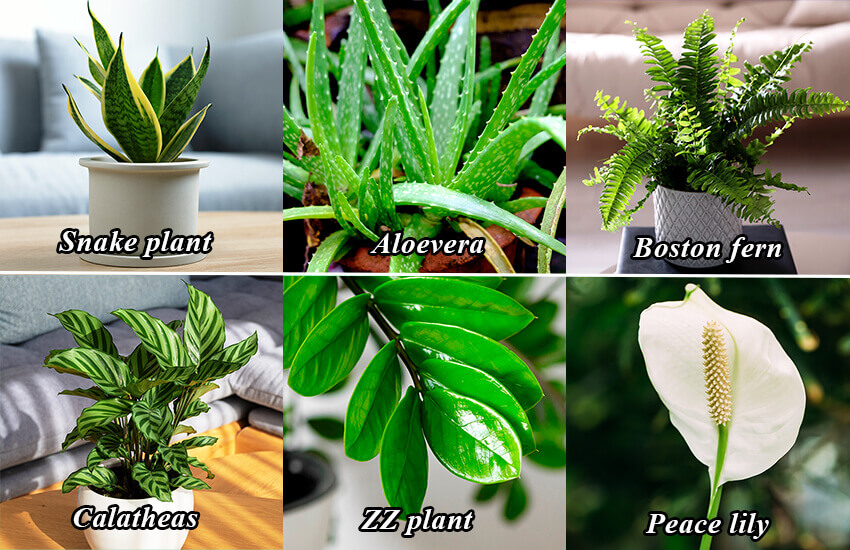
Easiest plants to propagate from pups or plantlets
Pups are just brand-new, tiny plants that emerge on their own close to the original plant’s base. Pups may also be referred to as slips, offshoots, offsets, rosettes, plantlets, suckers, or babies. In this case, they all have the same meaning: a new tiny plant that is prepared to develop into a new mature plant [4].
Taking pups, or plantlets, from the base of your mother plant and placing them in fresh, moist potting soil is one of the easiest ways to propagate houseplants. But bear in mind that not all plants can give birth to pups. The following plants are some of the easiest plants to propagate from pups or plantlets:
- Spider plant (Chlorophytum comosum)
- Opuntia (prickly pear or pear cactus)
- Chinese Money Plant (Pilea peperomioides)
- Easter Cactus (Rhipsalidopsis gaertneri)
- Aloe vera
- Ponytail palm
- Bromeliad
- Mother of thousands (Bryophyllum daigremontianum)
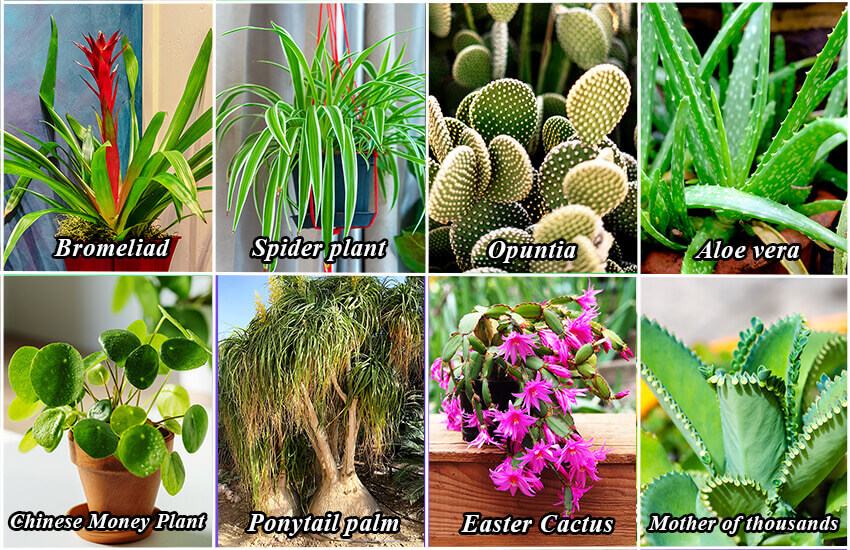
How to propagate by stem cuttings?
You need a plant with vine-like stems in order to reproduce plants from stem cuttings. Some of the best plants of this class include the pothos, tradescantia, and philodendron varieties. Simply follow these basic steps to multiply some of your preferred foliage plants [5].
- Locate a stem on your plant with at least a few leaves on it.
- Find the node: The portion of a plant where the leaf joins the stem is known as a node.
- Cut directly beneath the node using clean shears.
- Put the stem cutting in a vase of water to stimulate root growth.
- Change the water once a week to keep it fresh, and check on cuttings every few days to see if any new root growth has shown.
- Your plant is ready to be transplanted into a pot when its roots are 2 inches long.

How to propagate by leaf cuttings?
Like stem-cutting propagation, this kind of propagation is also relatively easy. To propagate by leaf cuttings, follow these steps:
- Choose a plant for propagation. You may need to delicately twist or cut a leaf from the stem of the plant you have chosen. Snake Plants must be cut at the base of the leaf, while succulent species like Echeveria and Sedum typically twist off easily. You may cut a snake plant leaf into pieces that are each around 2-3 inches long.
- Put your leaf cuttings in a secure location and wait one to three days for the rough edges to dry out.
- After the raw edges have started to dry, place the succulent leaves on top of the potting soil, ensuring they are not submerged. If you are growing a snake plant, plant your cuttings in the soil vertically in the direction that the plant should develop. The snake plant leaf’s base only needs to be partially buried to remain upright (approximately ½-1 inch).
- Growing leaves need watering more frequently than established plants do. When the soil starts to dry, spray it to moisten the leaves. Your cuttings should be placed in an area with lots of direct and strong sunshine.
- Watch for the formation of small roots. During two to three weeks, you ought to see root growth.
- Remove the original succulent leaf gently when it produces a baby succulent ½ inch tall. Then plant the newborn succulent in well-draining succulent potting soil. If you are growing a snake plant, your cuttings will root in their container.
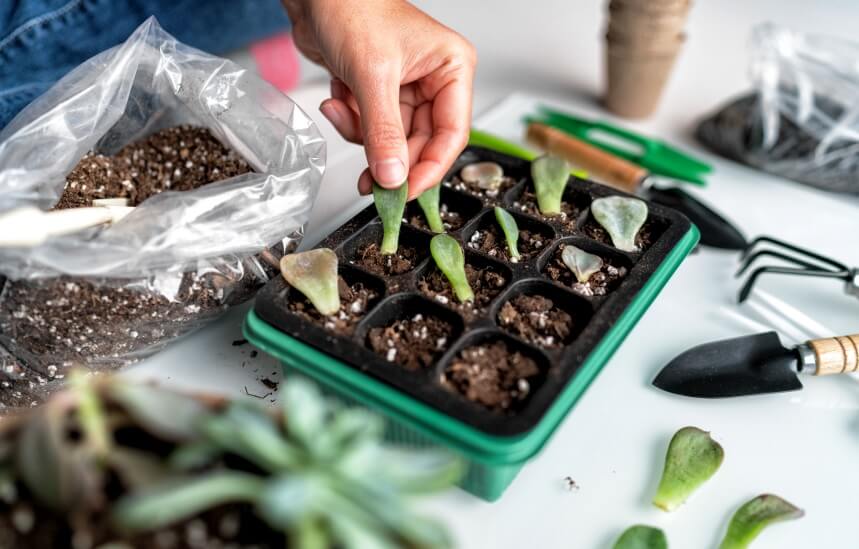
How to propagate by root division?
It really is as easy as it seems to be! Plants can be multiplied through root division, which involves cutting them into smaller pieces or portions while leaving the roots whole. This is a terrific method to expand your collection and give your plants more room to flourish when they outgrow their pots.
Remember that this should only be done if each plant part has a separate root ball and system. In the absence of this, they face the risk of drying up and failing to get enough nutrients through their roots. As mentioned, some of the easiest plants to propagate from division include Aloe vera, ZZ plant, Snake plant and Peace lily.
To make more of your favorite foliage babies by root division technique, follow these steps:
- First, take the houseplant out of the pot.
- Carefully separate the plants by pulling apart the roots. If splitting the roots apart by hand proves to be too challenging, consider using a sharp knife or pair of shears.
- Use the best potting soil to repot your “new” plants in separate pots.
- When your new plants are established, maintain them evenly hydrated and in an area with ideal bright, indirect light.

How to propagate plants using pups?
Plant pups are frequently referred to as clones or offshoots. They can take on many shapes, such as spiderettes on spider plant leaves or a fresh cactus growth close to the parent plant. These offshoots can be used to propagate your plant easily.
Whether the pup is close to the parent plant’s root or a little farther away, you can follow these basic steps to make a new plant from pups [6]:
- If the pup is submerged in soil, wait until it has grown a little (about an inch high), and then dig underneath and around the pup before removing it from the soil, making sure to get some roots. Make a clean cut if the pup is close up against the mother plant.
- If you are working with a succulent or cactus, give the recently cut pup some time to dry out.
- If the root system is still too simple, submerge the pup in water to help it grow stronger roots.
- Place the pup near a window that receives bright, indirect sunlight. Depending on the plant variety, it could take a few weeks or months. Keep a watchful eye on your pup and look for root activity. Moreover, keep an eye out for hazy water and replace it with fresh water.
- Once you notice a robust root system, which is normally one or two inches long, you can pot your pups. Initially, you should use a modest-sized pot. The roots may become overwhelmed if there is too much room surrounding them. Also, remember that if the plant’s roots are allowed to grow in water for an excessive amount of time, they may have difficulty adjusting to life in the soil.
